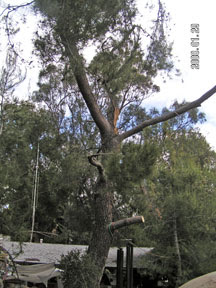Intelligence won’t get you far.
So be glad you’ve got more sense
Than you’ve got intelligence.”
Piet Hein
 My imagination waxes and wanes with the moon, and sometimes it feels like sense and intelligence seem to ebb and flow inside me. Lunacy or imagination?
My imagination waxes and wanes with the moon, and sometimes it feels like sense and intelligence seem to ebb and flow inside me. Lunacy or imagination?These nights, here at 32° 46'13" N, 116° 57' 22" W, the waxing moon is still only a part of itself. Each night, outside my bedroom window, it rises in the east a bit earlier, but still looks like an old woman haunted by loss. Yet when the moonrise finally creeps above the trees, the light seems distracted – perhaps by other planetary events beyond our view from earth – and not paying full attention to me below.
Of course, through the miracle of the interweb (sic), you can go Here to calculate your very own longitude and latitude.
The night is no longer young. Before the moon rises, night is lost in middle age. The shadow of pallid moonlight on the dew-damp stones outside the window makes each stepping stone look like it’s shrugging its shoulders. It looks like the preoccupied gesture a weary mom makes, brushing her arm past her tired face, in wordless reply to a persistent child needing attention.
The moon is a mere shadow if its former self. The first month of this new year is almost over, but the waxing moon promises there’s life after January. The phases of the moon usher in and out seasons. Not a blunt and banal four seasons, but more like 400. More than once a day, the whole world changes right before my eyes.
Take, for example, my back yard. My garden is like a river: I never step into the same garden twice. During the waxing moon, my imagination seems to swell, and I seem to have more sense. Then later, like the waning moon, I realize that while I may be better informed, I’m often none the wiser. So much for internet intelligence.
While it may be obvious to the point of banality, Seasons always return, but each is different. This winter may be similar to last winter, but it is not the same. And this waxing moon is smiling at me.
This post was inspired by a post from From Greeny at Sometimes You Get What You Need with a picture of a smiling moon...





















